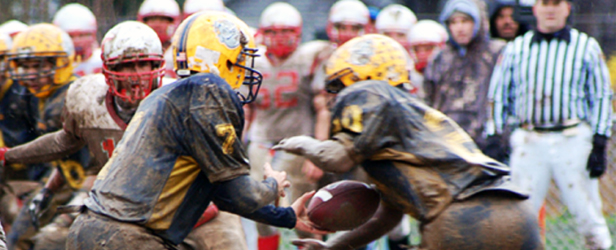
With the beginning of football season, the long anticipated excitement for the early powerhouse match ups has finally arrived. Coaches get their first look at new players, and fans can see what they can expect from their favorite teams. However, for some reason, many of the players that we were looking forward to watching are no longer on the field. Sadly, in recent years, what you can expect is a handful of injuries. More evident in pre-season camp and opening day, injuries due to a lack of preparation are seen in the countless non-contact ACL tears, Achilles tendon ruptures, and various strains, which are more prevalent now than ever. Let’s look at a very probable reason why.
Diagnosing football
A typical play lasts all of six seconds at most. In between, you have about 30 or more seconds to recover. This makes football a very atactic sport. Expanding on this system requires a higher fast twitch capacity. To build on an athlete’s capacity, you must induce an adaptation, which means high intensity loaded bouts of seven seconds or less with approximately 30 or so seconds to recover. You can build this by having your athletes perform repeated sprints until they’re unable to stay below the anaerobic threshold when recovering. Adaptation makes it necessary to increase the exercise intensity or duration needed for the saturation phenomenon. So eventually, your athletes should be around 40 or more sprints per session in around 50 minutes leading up to the season, not the typical 15–20 sprints or cross fields that most coaches consider substantial.
Missing the boat
Anymore, the majority of work we see year round is constant glycolytic energy systems development until the athletes can no longer move or they vomit. The major downfall to this is that you can expand on this capacity for only four weeks before it produces a diminished return. Yet, all we see in many programs and online videos is this push for high intensity “run till you can’t feel your legs” sort of conditioning. This sort of mentality is not only physically unrelated to the sport but mentally taxing as well. According to the research and the training residual of this energy system, the best time to train this capacity is the month leading into camp.
Putting it to practice
With building the capacity of the fast twitch fibers, you’re in fact increasing the oxidative potential. One thing you must avoid while improving the oxidative potential is efforts exceeding the anaerobic threshold. Highly intense glycolytic activity suppresses the oxidative process and activity of aerobic enzymes. Therefore, it’s important that heart rate monitors are used to ensure quality of the workout.
A few examples of workouts to expand fast twitch capacity are:
· Sled sprints with 10-lb plates for 30–40 yards until unable to remain under anaerobic threshold
· Hill sprints for 4–7 seconds until unable to remain under anaerobic threshold
Obviously, you don’t have to have the heart rate monitors to do this sort of conditioning, and this conditioning is much too important to skip. If you don’t have the benefit of heart rate monitors or anaerobic threshold testing, there are still great ways to induce the same training adaptation.
Here are a few examples:
· 7 on 7 for 30–45 minutes
· Sled drags/hill sprints—just run for time (4–7 seconds) and rest for approximately 30–40 seconds; gradually build from around 12–15 seconds until about 35–40 by the end of the off-season
· Weight vests sprints/position work for 20–30 yards with 30–40 seconds rest
Of course, look for signs of excessive fatigue, hyperventilation, flushed face, and profuse sweating, which are good indicators that the athletes have reached there anaerobic threshold.
There are certainly other ways to go about developing the energy system. But this all depends on whether or not you train individuals or teams. Individuals give you the opportunity to utilize the heart rate monitors and keep track of the time of each sprint. You may also have access to testing equipment to determine threshold levels, which allows you to know exactly how far you may push the athlete. However, if you’re training a team, time, organization, and resources are all factors. This is a great time to utilize the second group of exercise examples. With these protocols, you can easily keep track of the number of reps that your large groups do in a very controllable environment.
Remember that football isn’t a linear sport. These movements aren’t limited to straight ahead sprinting. Take advantage of versatile tools such as weight vests, which allow for freely moving tactical work.
In summary, fatigue is the main contributor to injuries in most sports. When you’re tired, you overcompensate and your form is usually what goes first. So avoid the heavy breathing and playing your way into shape. Get your energy systems in line so you’re ready to dominate before the first snap!
References
- Viru A (1995) Adaptation in Sports Training. Boca Raton, Florida: CRC Press.
- Zatsiorsky VM (1995) Science and Practice of Strength Training. Champaign, Illinois: Human Kinetics.
Elite Fitness Systems strives to be a recognized leader in the strength training industry by providing the highest quality strength training products and services while providing the highest level of customer service in the industry. For the best training equipment, information, and accessories, visit us at www.EliteFTS.com.








